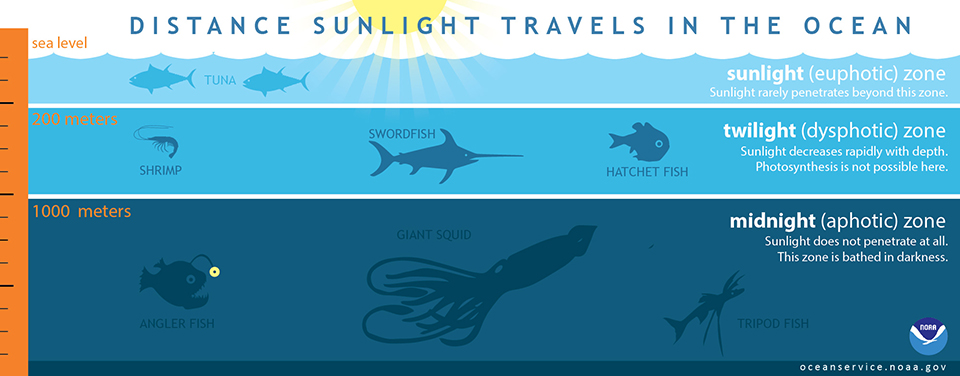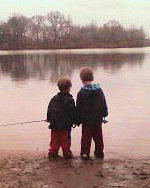I’ve been mama-ing (i.e., SAHM) it lately to a 6yo and 3yo and with that comes some hard lessons to learn. I mean I just explained that there is one ocean but it has five spots with five separate names and now I get “Why is the bath still hot when you added so much cold water!?” (think of that one as being asked in a shrilly voice, too).
I had to keep my cool when I explained that the water on top still feels warm … but, if you could (please, please, please!) stick you toes in the tub to the bottom it will be cold and then you can mix it up.
I jazzed it up and said that when water droplets get cold they huddle together. More of them will take up the same space so it’s heavier (i.e., denser). Therefore, they’ll sink to the bottom of the tub.
In the ocean the water on the bottom is definitely colder, too. However that’s generally because sunlight isn’t penetrating past the first 200 meters (1/8 of a mile).
You see the ocean has a “thermocline.” The thermocline is a place when the temperature drastically changes. On the surface of the sea – the top 200 meters – it’s warm since it gets a lot of sunlight. Sunlight can’t really go any further and the temperature decreases for the next 800 meters. That layer where the temperature drastically changes is called the “thermocline”. After that the zone without sunlight is consistently colder. Check out the image below from NOAA Ocean Service and then this interactive and extremely up-to-date sea surface temperature map from NASA.

 of fishing is going to be around for future generations to enjoy.
of fishing is going to be around for future generations to enjoy.






What people are saying …